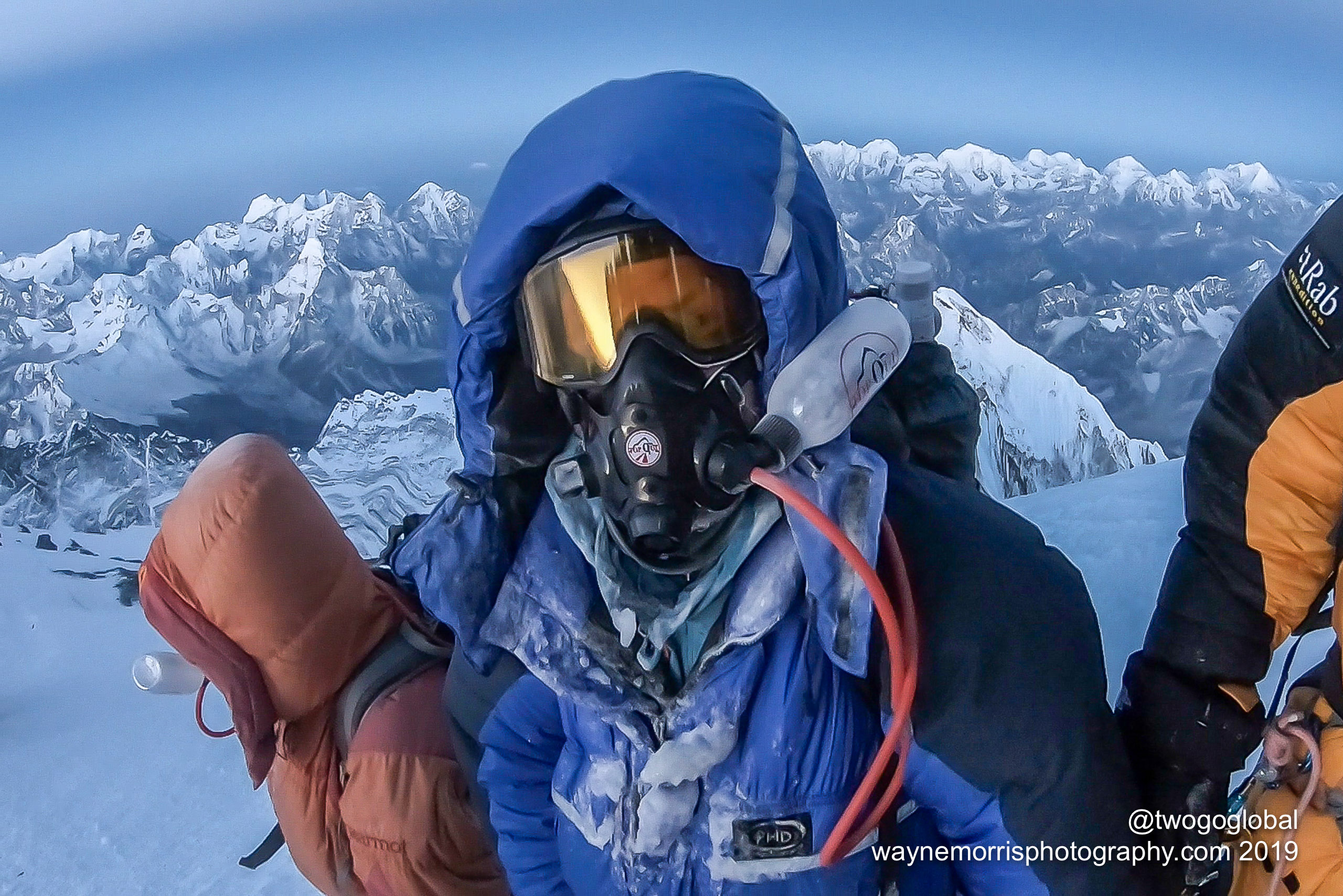Anesthetic Gas And Speed Climbing Everest: A Controversial Approach

Table of Contents
The Allure of Speed Climbing and Altitude Sickness
The Physiological Challenges of High Altitude
Ascending to Everest's summit presents extreme physiological challenges. The drastically reduced atmospheric pressure at extreme altitudes leads to a lower partial pressure of oxygen, causing hypoxia – oxygen deprivation. This can trigger a range of serious conditions:
- Acute Mountain Sickness (AMS): Symptoms include headache, nausea, vomiting, dizziness, and fatigue.
- High Altitude Pulmonary Edema (HAPE): Fluid builds up in the lungs, causing shortness of breath, coughing, and potentially fatal respiratory failure.
- High Altitude Cerebral Edema (HACE): Fluid accumulates in the brain, leading to confusion, ataxia (loss of coordination), seizures, and coma.
Rapid ascent significantly increases the risk of developing these life-threatening conditions. The body doesn't have enough time to acclimatize to the decreasing oxygen levels, increasing the severity of altitude sickness symptoms.
The Appeal of Speed Climbing
Speed climbing Everest, while incredibly dangerous, holds a certain allure. Motivations include:
- Record Attempts: The pursuit of setting new speed records fuels many attempts, driving climbers to push their physical and mental limits.
- Competitive Aspect: An inherent competitive element exists among climbers, pushing individuals to strive for faster ascent times.
- Reduced Weather Exposure: A faster ascent minimizes the time spent exposed to the harsh, unpredictable weather conditions prevalent on Everest. This is a significant factor influencing speed climbing strategies. However, this reduced exposure comes at a significant cost in terms of health risks.
Anesthetic Gas: A Potential Solution (or Problem)?
How Anesthetic Gases Might Help
Theoretically, certain anesthetic gases could temporarily alleviate the symptoms of altitude sickness by:
- Reducing Respiratory Drive: Some gases might depress the respiratory drive, thus potentially reducing breathlessness associated with altitude sickness. (This is extremely risky without careful medical supervision).
- Altering Perception of Dyspnea: These gases might alter the perception of breathlessness, allowing climbers to push harder despite physiological limitations. (This is also extremely risky and can mask critical warning signs).
- Potential Gases: Gases like nitrous oxide or other sedatives, although generally not used in this context for ethical and safety reasons, have been discussed in theoretical contexts.
The Risks and Ethical Concerns
The use of anesthetic gases at high altitude carries immense risks:
- Respiratory Depression: The primary concern is respiratory depression, potentially leading to hypoxia and death due to inadequate breathing.
- Cognitive Impairment: Anesthetic gases can significantly impair cognitive function, judgment, and coordination – crucial skills for safe mountaineering.
- Long-Term Health Effects: The long-term health consequences of using such gases at high altitude remain largely unknown and potentially severe.
- Accidental Overdose: The risk of accidental overdose, especially in the challenging conditions on Everest, is substantial, with potentially fatal consequences.
- Ethical Concerns: Using anesthetic gases to gain a competitive edge raises serious ethical questions regarding fairness, safety, and the inherent risks involved.
- Lack of Regulation: There is currently a significant lack of regulation and safety protocols surrounding the use of anesthetic gases in high-altitude mountaineering.
Alternative Approaches to High-Altitude Climbing
Acclimatization Techniques
Acclimatization is the cornerstone of safe high-altitude climbing. Gradual ascent allows the body to adapt to decreasing oxygen levels, reducing the risk of altitude sickness:
- Gradual Ascent: Ascending in stages with rest days at progressively higher altitudes allows the body to adjust physiologically.
- Rest and Hydration: Adequate rest and hydration are vital for acclimatization, ensuring the body's optimal functioning at altitude.
Supplemental Oxygen
Supplemental oxygen is a safer and established method to combat the effects of altitude:
- Oxygen Systems: Various oxygen systems are available, from simple cannulas to more sophisticated devices.
- Advantages: Supplemental oxygen helps alleviate hypoxia, reducing the severity of altitude sickness and improving performance at high altitudes.
- Disadvantages: Oxygen systems add weight and complexity to the climb and require proper training and management.
Conclusion
While the allure of speed climbing Everest is undeniable, the use of anesthetic gas remains a highly controversial and potentially dangerous method. The potential benefits are significantly outweighed by the serious risks, including respiratory depression, cognitive impairment, and potentially fatal consequences. The ethical concerns surrounding this practice are substantial, highlighting the importance of prioritizing safety and responsible climbing practices. Safer, established methods like proper acclimatization and supplemental oxygen exist. While the lure of “anesthetic gas speed climbing Everest” might seem appealing for some, the potential loss of life is too significant to ignore. Prioritize your safety and consider the ethical implications before attempting such a feat. Explore safer alternatives for climbing Everest and engage in responsible mountaineering practices. Learn more about the risks of anesthetic gas speed climbing Everest and make informed decisions regarding your ascent.

Featured Posts
-
 Ufc Fighter Paddy Pimblett Knocked Out In 35 Seconds
May 16, 2025
Ufc Fighter Paddy Pimblett Knocked Out In 35 Seconds
May 16, 2025 -
 Riscuri Apa De Robinet Ghid Pentru Consumatori Din Romania
May 16, 2025
Riscuri Apa De Robinet Ghid Pentru Consumatori Din Romania
May 16, 2025 -
 Tam Krwz Ke Jwte Pr Mdah Ka Pawn Ayk Ghyr Mtwqe Waqeh
May 16, 2025
Tam Krwz Ke Jwte Pr Mdah Ka Pawn Ayk Ghyr Mtwqe Waqeh
May 16, 2025 -
 Roma Monza Partido En Directo
May 16, 2025
Roma Monza Partido En Directo
May 16, 2025 -
 4
May 16, 2025
4
May 16, 2025
